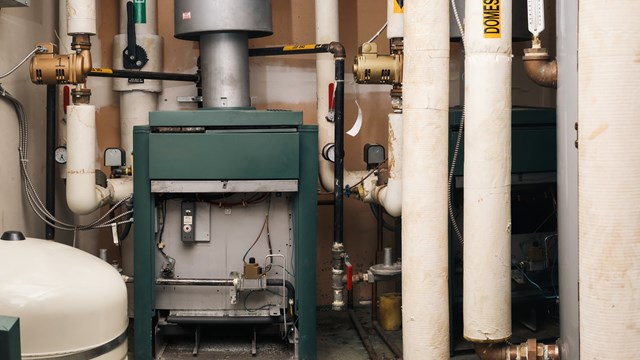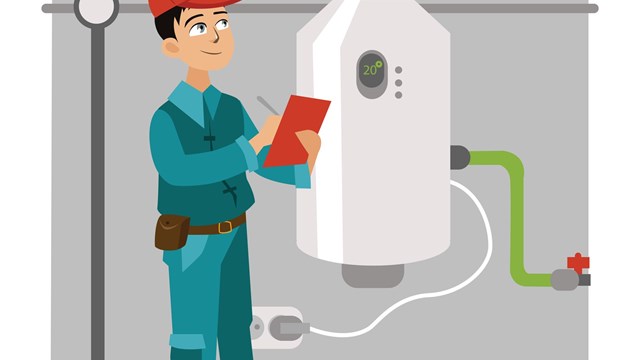A cold, wet spring turned quickly into a hot, humid summer rife with thunderstorms and localized flooding throughout the northeast. As autumn starts to paint the region’s foliage, building community and association boards and managers are looking at long-range forecasts and, in their annual ritual, wondering what winter will hold this year.
Will conditions be just right for those nasty ice dams that wreak havoc on flat roofs and top floor apartment units? Will a long, deep freeze put stress on heating systems and lead to burst pipes? Will snow and thaw-freeze cycles create slip-and-fall hazards throughout New York streets?
Whatever Mother Nature is getting ready to throw at New York City during the upcoming season, the time has come for co-ops and condos to pull out their winterizing checklists and get busy on buttoning up their properties.
With winter on the way, we asked experienced industry professionals what items on are on their to-do lists—and should be on your building community’s list, too.
Winterizing Windows
When there’s water penetration or water migration coming into a building around window frames, those areas have to be maintained before winter and should be looked at before fall ends.
“You need to make sure all the sealants around the windows are soft, pliable and still have some elasticity to them,” says Wayne Bellet, president of Bellet Construction Co. Inc. in Manhattan. “If your caulking is brittle, you’re going to have problems all winter long and what’s unfortunate about that is, you won’t be able to fix it even if you wanted to because the weather will be inclement.”
Also with windows, there is a little piece of metal over every single window head, which is a steel lintel that supports the brick above the window.
“They rust, bow and eventually fail,” Bellet says. “If they rot, the bricks above them will become loose and it can cause water penetration. You need to do this before winter hits and you have water leakage. This is a more expensive repair that involves scaffolding and includes more extensive work done by a professional.”
So, what if an emergency situation arises and cement work does need to be done?
“You are really bending the rules when you tell me you want to do quality construction repair in the winter,” Bellet says. “There are additives and supplements you can put into the mortar mix, you can put sealant and asphalt into spare bulkheads, but depending on how cold it is outside, you have a very short window of usability. Not to mention the human aspect of how crummy it is and how uncomfortable the worker is. If it’s not ideal conditions, you shouldn’t be doing it. It could be compromised.”
Clear the Roof
According to experts the roof, in general, should be thoroughly inspected prior to storm season. During the inspection the roofing company will look for signs of damage from previous storms, snow accumulation and general wear and tear.
Fall is considered the best time for a roof inspection because it is much harder in the winter to do the repairs because you have to clear ice and snow. And whether on the roof or on the ground, snow accumulation is just about a sure thing in any New York winter. The only question is whether enough snow will land at any given time to create major headaches for properties.
Remember "Snowmageddon" a few years ago, when the snow just kept coming? And over the past 5 to 6 years, New York City has accumulated some record snowstorms. Property managers who tried to find professionals to clear snow off over-burdened roofs in the midst of that season were generally out of luck. Associations are encouraged to make arrangements in the fall with a roofing contractor—not for shoveling every snowstorm, “but, ‘can I call you if these conditions occur?’”
Sand and salt contracts also need to lined up in early fall, too. Once winter storms hit, those commodities can be difficult to find
Don’t Forget the Inside
While outdoor checklists may dominate winter-preparation thoughts, the changing seasons bring indoor tasks to the fore as well.
Buildings that shut the heat down for the summer need to get those systems ready to roll for the fall. The time between October 1st and May 31st is referred to as the “heating season,” and building owners are required by law to provide heat to residents.
Due to rising utility costs, it’s important to ensure your heating system is running as efficiently as possible.
“You need to search for areas where heat can escape,” says Peter Grech, a building operations consultant, a resident super and education coordinator with the New York City Superintendents Technical Association.
“Locate the areas where air infiltrates the apartment. Windows and terrace doors are big culprits. You have to check the gap between the bottom of the door and the saddle, as well as the gap around the doorframe. For a reasonable amount of money, you can weather-strip the door, not only to save money but to improve the comfort level.”
Grech also suggests checking the basement to see if hot air or heat is escaping. “A simple way of inspecting the basement is by taking a lit candle down there to check for drafts,” Grech says. “If the candle flame moves, then you know air is moving. For individual apartments, you can put a candle by the window—if it’s flickering or moving, you know air is getting in. Or you can go with the new way, where you buy an expensive infrared thermometer and see where the heat is escaping.”
During the heating season, building personnel should closely monitor fuel consumption in reference to past consumption for similar degree days. Any notable increase should be addressed immediately.
All steps in winterizing are important, but there are things that need to be done every year or trouble could arise.
“While there really is no one single most important thing to prepare for winter, if I had to choose one, it would be the heating plant,” Grech says. “Boilers must be tuned, cleaned, and tested for heating production before winter arrives. Second, and equally most important, is to make sure all water lines that are exposed to the weather are shut down and drained.”
Buildings with air conditioning units or systems need attention, too. Experts suggest covering any wall AC units and chillers to protect them from winter’s harsh temperatures.
The last essential winterization step is checking the boiler, according to Bill Jebaily, owner of Aggressive Energy & Mechanical Group in Brooklyn. Boiler maintenance is a must and can save a building thousands in potential repairs in the long run.
“The bottom line is that an eighth-of-an-inch of soot inside a boiler will significantly reduce the efficiency of the boiler, thereby causing excessive use of fuel and can reduce the efficiency at 20 to 30 percent,” he says. “If a building is spending $100,000 a year on fuel, and now it’s spending $120,000; that’s what should get people to move and do this.”
During the spring and summer months, all boilers should be checked for leaks, all tubes that may have been plugged during the heating season should be changed and all gasketing should be checked, says Michael Sandler, president of NuWay/Scientific Boiler based in Brooklyn. Any leaking tubes or open seams should be attended to immediately, he says.
Boilers that are being used to generate hot water during the spring and summer months should receive also another major cleaning in the fall just prior to the start of the next heating season. This will ensure that your boiler is in proper operating condition enabling it to work at its peak efficiency throughout the heating season.
Whatever systems exist in your building, early fall is the time to winterize them, and admit that there will be enough cold air coming—thanks to Mother Nature—in the months ahead.
Pat Gale is associate editor of New England Condominium, a Yale Robbins’ publication, and a frequent contributor to The Cooperator. Editorial Assistant Enjolie Esteve contributed to this article.







Leave a Comment